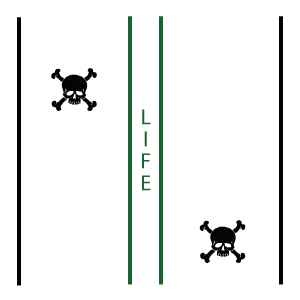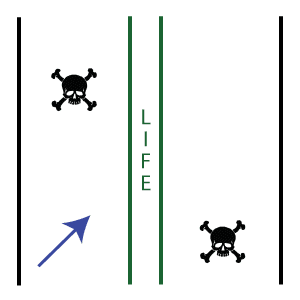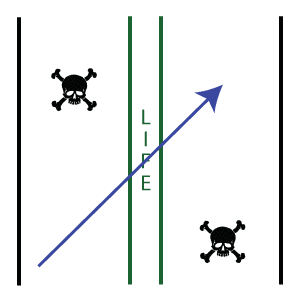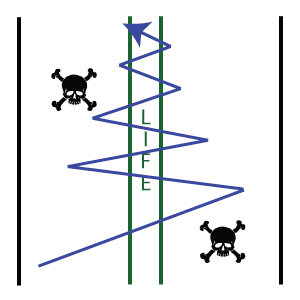By Michael Thorne Jarrett
There is a handbook of Christian teaching from the first century that was likely written even before some of the New Testament books were written. It is called the Didache, “the Teaching,” and it begins like this: “there are two ways; the way of life and the way of death; and there is a great difference between the two ways…”
This, of course, is simply a re-capitulation of what Christ has said in Deuteronomy through Moses and then said again while teaching his disciples in what we call the Sermon on the Mount. There are two ways – life and good and blessing, death and evil and cursing. Additionally, Jesus tells us that the way that leads unto life is a very narrow way.
For a long time I guess I thought of these two ways as being opposite ways – like a two roads diverging in a yellow wood sort of thing. You can go left or you can go right. But over the years, I have realized that a different visual aid may be more helpful in understanding this spiritual reality.
Rather than two diverging paths, one to the right, one to the left, perhaps this narrow way that leads unto life lies smack in the middle of the wider way of death and destruction. Something like this:

I have found this to be so because I have noticed in my own life and in the lives of many others around me that our noble pursuits so often, if not always, begin with a good and right trajectory and end in idolatry.
It goes like this: I identify something in my life that is causing death – a habit or a belief, etc. – and I set a course away from death and toward the narrow way of life.

However, somewhere along the way, inevitably, the maintenance of my trajectory becomes my new death bringing habit or belief so that I pass straight through the narrow way of life – which is Christ himself – and shoot right back into the wide way of destruction.

Of course, as you can see, the next time that I can muster up enough humility to re-examine my new and present sinfulness, I will find that the path toward health and healing is in quite a different direction from the first path. In fact, in binary terms of “right” or “left” you would have to say that the new path is the opposite direction of the first.
In spiritual formation terms this turning back the other way is called repentance. The strength to do it, especially when it seems opposite to what you have been doing and calling “good, – this strength – is humility.
As we mature as followers of Christ and are re-made more and more into the likeness of our Savior, our life should be characterized by repentance. It should look like this:

In this season of Lent as we examine ourselves for those places where we are still walking in the path of death and evil and cursing, I would like to invite us all to look specifically at some of the places where our greatest passion lies, the things about which we are most ardent, our little soap boxes if you will. And as we do this, let’s ask ourselves the following question:
How will I know when I have overshot the narrow way of Christ and have made an idol of my own affections?
This is an important question. How will you know when you have entered back into death on the others side, when your pendulum is swinging toward the far wall?
You see, it is our fallen nature to make idols of those things we think are right and best. But no matter how good our favorite issue or agenda may be, it is not Christ. Justice, mercy, right doctrine, proper liturgy, good music, ethical business, you name it, it is not Jesus Christ himself, who with the Father and the Holy Spirit alone is to be worshiped.
The fruit of the Spirit of Christ working in us is never obtained by seeking that fruit. It is obtained only by seeking Christ who gives it. Our lives are changed by seeking Christ alone, humbly, in a life of repentance.
Michael is the director of The Trinity Mission which creates resources and opportunities for Christian formation and spiritual direction. You can join him and thousands of others in prayer each day through the Audio Daily Office podcast at http://thetrinitymission.org.

